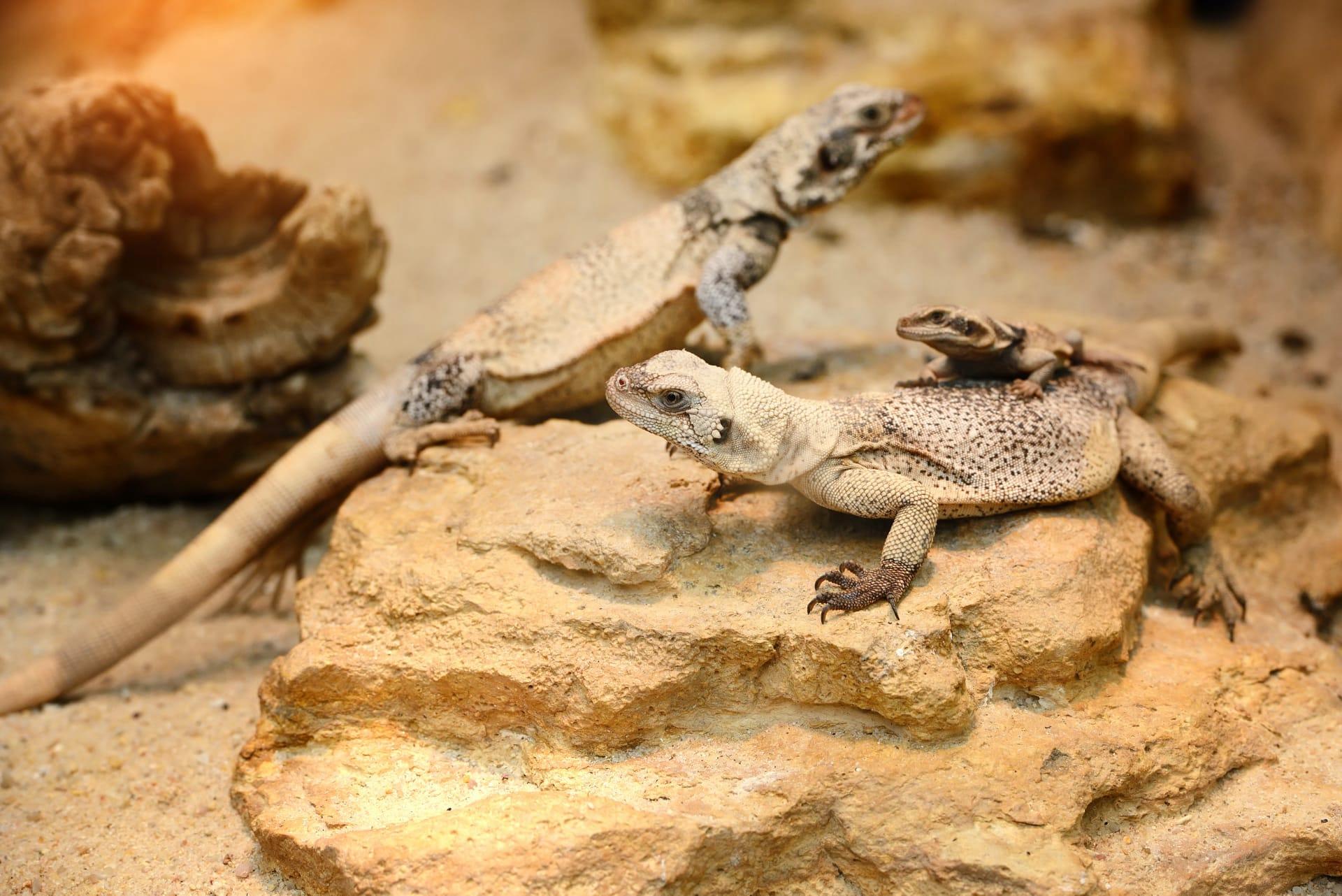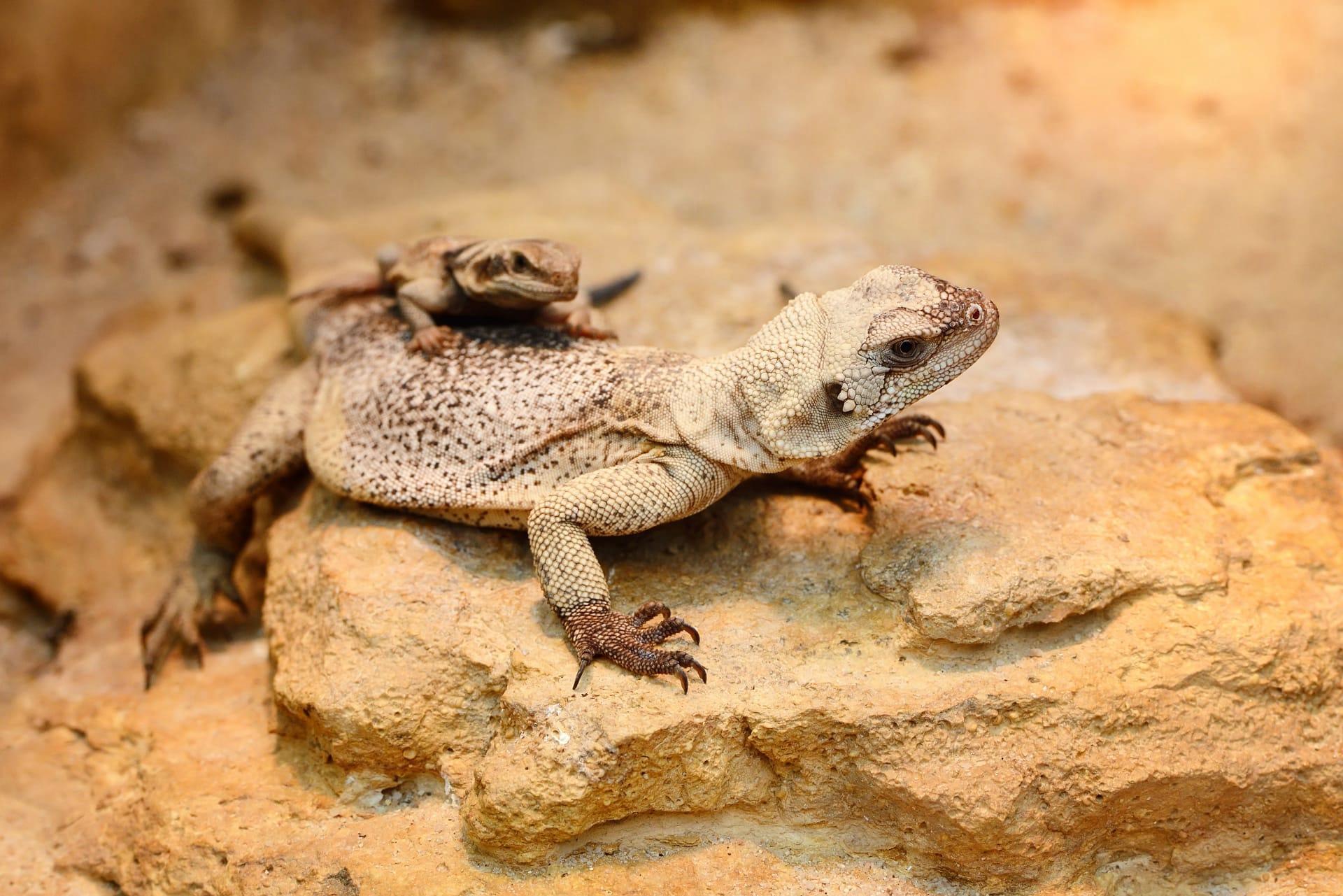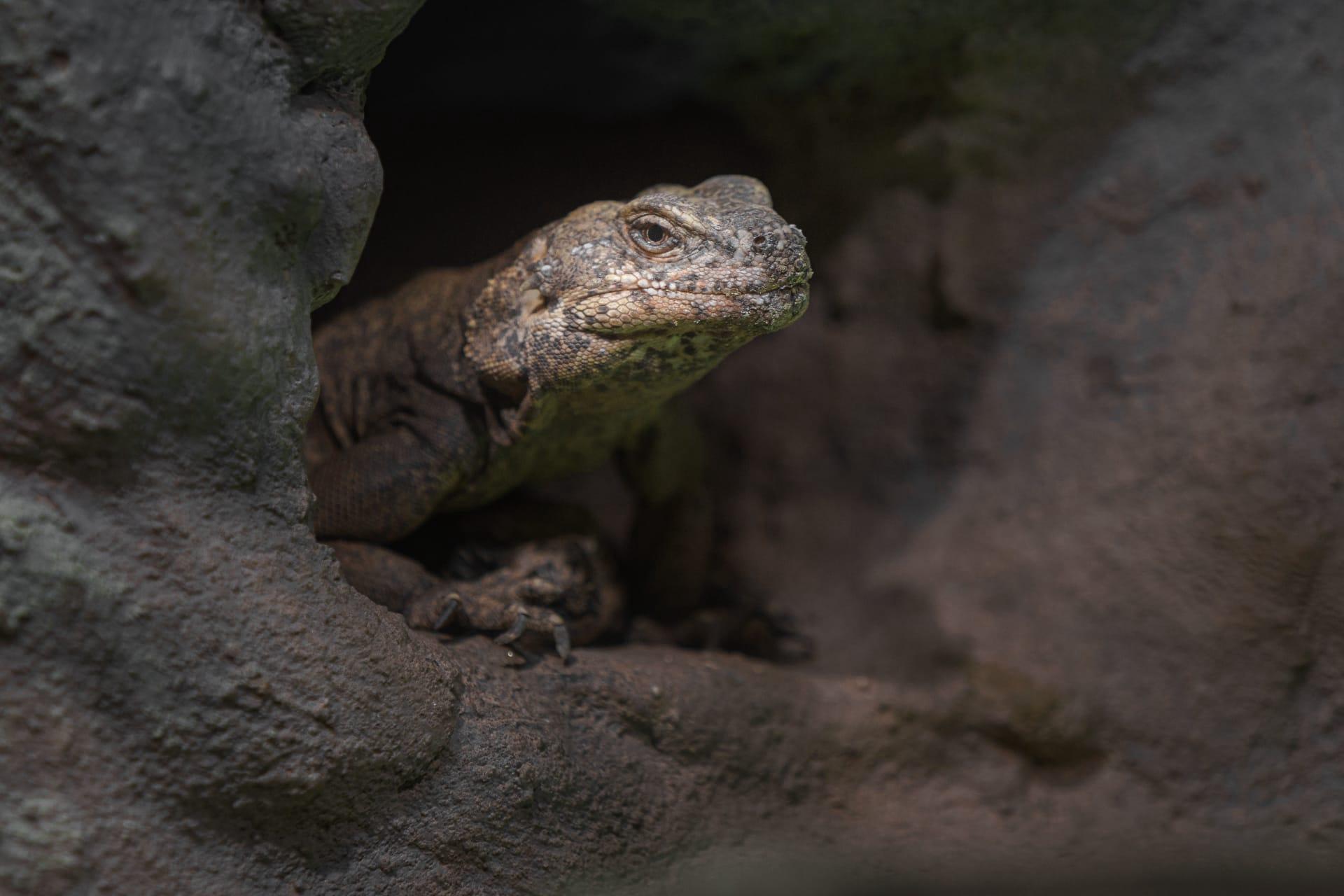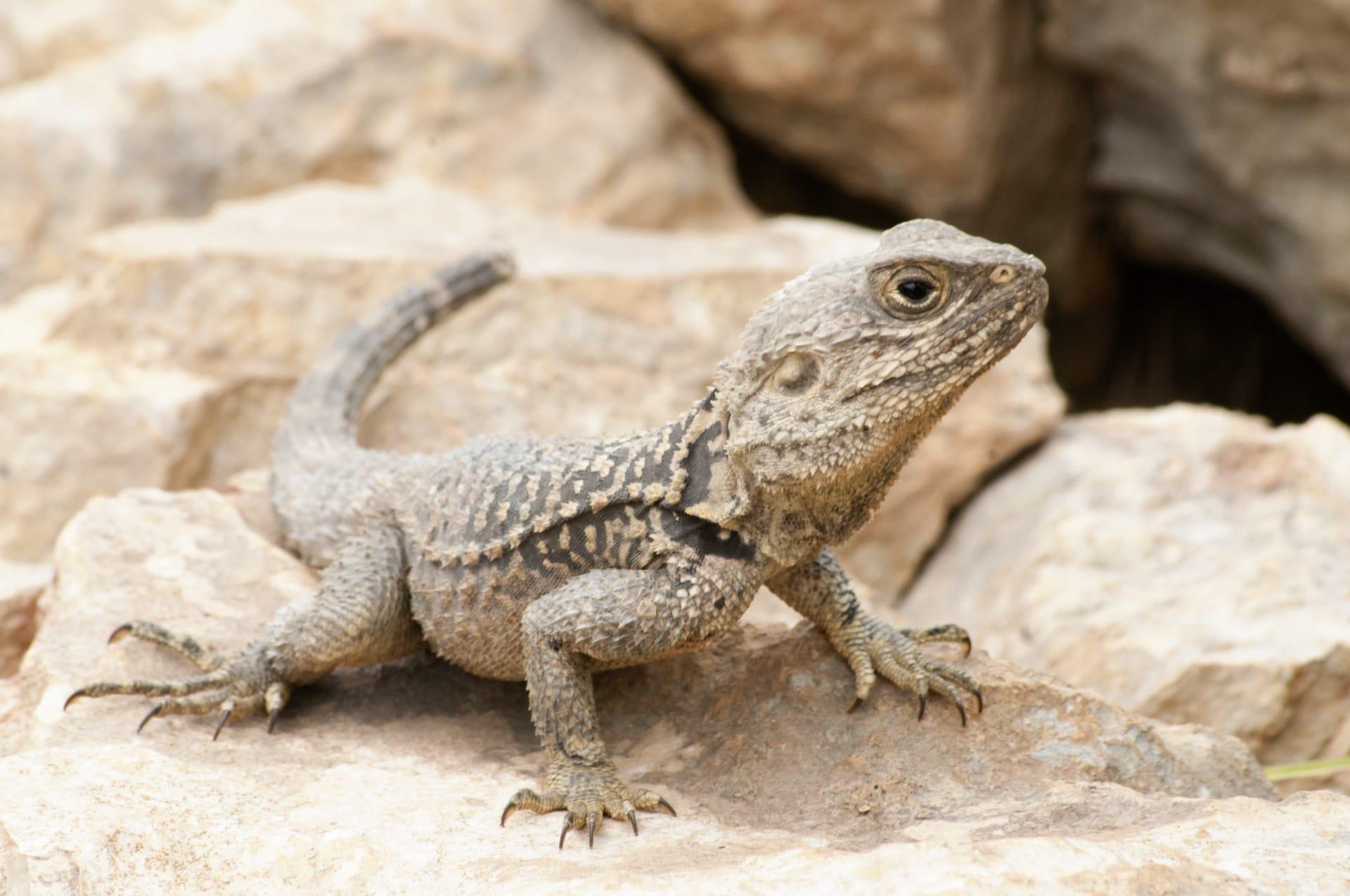American Chuckwalla Trivia
- Home /
- Trivia Question /
- Animal /
- American Chuckwalla Trivia
1
Question: What unique physical feature distinguishes the American Chuckwalla from other lizards?
Answer: The American Chuckwalla, scientifically known as Sauromalus ater, is notable for its loose, excess skin, particularly around the neck and shoulders. This skin aids them in thermoregulation and makes them appear larger when threatened. Adult chuckwallas can grow up to 15.75 inches in length, not including their tail, which can be equally as long.
Question: How does the American Chuckwalla's diet contribute to its survival in arid environments?
Answer: Chuckwallas are primarily herbivores, feeding on leaves, fruits, and flowers of desert plants. This diet is high in water content, which is crucial for their survival in dry habitats. They prefer yellow flowers and will often climb shrubs to reach them. Their efficient digestive system helps them extract maximum nutrients and moisture from their food, reducing their need for water intake.

2
Question: Is it true that American Chuckwallas are venomous?
Answer: Contrary to some misconceptions, American Chuckwallas are not venomous. They are harmless lizards that rely on their size and camouflage to avoid predators. Their primary defense mechanism is to wedge themselves in rock crevices and inflate their bodies, making it hard for predators to extract them.
Question: Do Chuckwallas change color like chameleons?
Answer: While Chuckwallas don't change color as dramatically as chameleons, they can slightly alter their skin tone. This change is primarily for thermoregulation - getting darker to absorb heat more efficiently in the morning, and lighter to reflect sunlight during the peak heat of the day.

3
Question: How do American Chuckwallas reproduce, and what is unique about their mating behavior?
Answer: Chuckwallas are oviparous, meaning they lay eggs. Mating occurs in early summer, and females lay 5 to 16 eggs in late June or July, which hatch in late September. The males display unique mating behaviors, like head bobbing and push-ups, to attract females and assert dominance.
Question: Can American Chuckwallas swim?
Answer: While they are primarily land dwellers, American Chuckwallas can swim if necessary. They are not naturally inclined to water but can float and move in water in a dog-paddle style. However, they avoid water and prefer rocky, arid environments.

4
Question: What is the average lifespan of an American Chuckwalla in the wild?
Answer: In the wild, American Chuckwallas can live for about 10 to 25 years. Their lifespan can be influenced by factors like predation, habitat conditions, and availability of food. In captivity, with ideal care, they can live even longer, up to 30 years.
Question: How do Chuckwallas use their environment for protection?
Answer: Chuckwallas are experts at using their rocky desert habitat for protection. When threatened, they will scurry into narrow rock crevices and inflate their bodies with air, making it difficult for predators to pull them out. Their skin color also helps them blend into their surroundings, providing excellent camouflage.

5
Question: What is the role of the American Chuckwalla in its ecosystem?
Answer: American Chuckwallas play a significant role in their ecosystems as herbivores. They help in seed dispersal through their feces and maintain the balance of plant species. They also serve as prey for larger desert animals, thus contributing to the food chain.
Question: Do American Chuckwallas hibernate?
Answer: Chuckwallas do not hibernate, but they do undergo a form of dormancy called brumation during colder months. During this time, they are less active and stay mostly within their rocky shelters to conserve energy, emerging only to bask in the sun on warmer days.